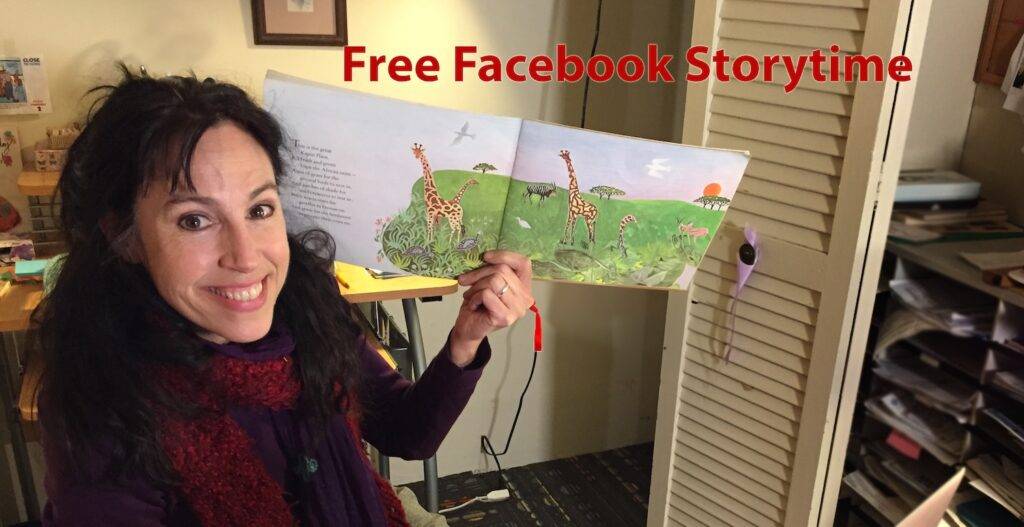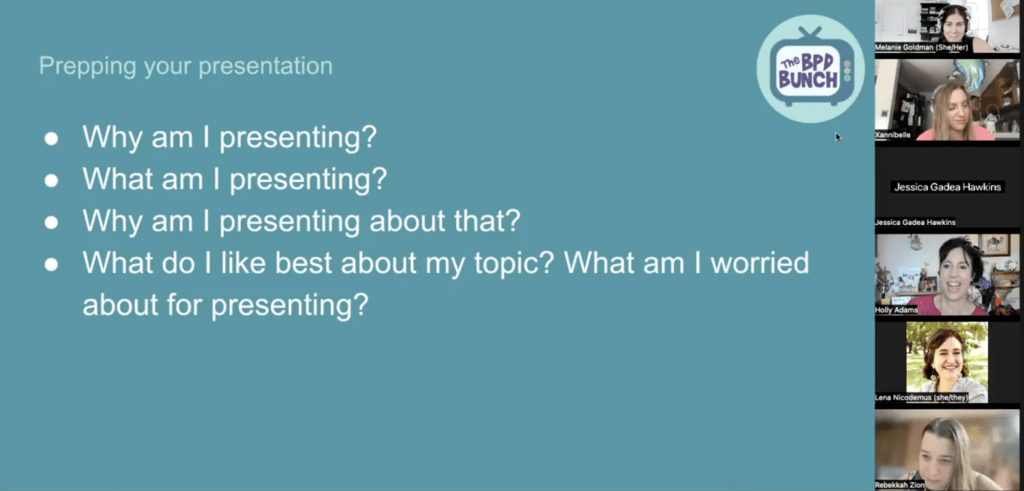
On Friday, March 13, 2020, everything closed in upstate New York. I was doing a project in an elementary school, and it was performance day. We had just finished our dress rehearsal and were about to perform for the rest of the school, when everything was cancelled and we were told to stay in our classrooms. No one knew why, no one knew what was going on. The kids were frustrated, but also frightened. So we communicated via email with the other classrooms, and used the camera on a laptop to film their in-classroom performance and send it to the other classes that wanted to see it. We then had a live talk back using some in-school education technology. It wasn’t ideal, but it got the job done.
Suddenly, the whole world had switched over to video. I did read-alouds over Facebook Live three days a week for months, hoping to fill the connection gap as best I could. And slowly, the tech for connecting with one another improved. But that meant many folks without a performing or presenting background were required to be ‘on’ in ways they couldn’t have foreseen without some tools that would support them. Many of us in the entertainment industry were happy to pass along good ideas for Zoom makeup, on camera tips, and great lighting.
Since then, there have been sweeping return to office mandates, but I’ve found that many out there still need to develop an essential skill for the 2025 world: how to present on video. Whether you’re pitching an idea to senior leadership, sharing out a year in review to your team, or honing your self-help guru skills, you’ll need to know how to showcase your best self on Teams/Zoom/the platform of your choice. A while back, I taught an online training for The BPD Bunch video podcast and wanted to share my tips out more broadly. Some of these apply to in person, while others focus on translating yourself to video specifically. Here’s Part One of this series with Part Two dropping next week.
The 4 questions to guide an effective presentation

Yes, it’s about the basics:
Why am I presenting? What am I presenting? Why am I presenting about that? What am I worried about for the presentation?
I recommend you actually write (or type) out these questions. Get it literally all down on the page so you have a set of notes to guide you. The goal here is to remind yourself what you’re trying to accomplish but also why you started out on this path to begin. Write down the answers to these questions and keep them somewhere behind your computer during your prep (one of the benefits of presenting remotely!).
Why am I presenting?
Hopefully this part is easy at a surface level. Maybe it’s because your boss asked you to. But really, this is two questions. Why am I presenting, and not someone else? Why am I presenting this particular thought, concept, advice (i.e. why is it important to me)?
Take your answers a step further and think through what you’re trying to accomplish. Some people like to set up learning objectives or an agenda to guide them and their audience. If you do include learning objectives, choose five or fewer (three is nice), and I recommend having them as bullet points at the top of your final set of presentation notes.
What am I presenting?
Write down the main points of your presentation. If you had to do it in 60 seconds, what would you say? Think of one sentence that would be the title or main idea. Follow that with 3 or 4 primary points. Think back to when you first learned how to write an essay or do a book report in school and distill down your big ideas: What is your thesis, your support, your message etc.
Why am I presenting about that?
Now’s a great time to add some flavor and fun or depth or intensity — whatever it is that brings the YOU and the topic together. MAKE NOTES! What stories or anecdotes do you have that reverberate most strongly? If you can’t think of flavor/fun/depth for one of your main points, that means it needs to be swapped out and replaced by a point that instigates your passion or process.
What am I worried about for the presentation?
It’s in the back of all of our minds: The lead up to a big presentation can be nerve-wracking. What if my internet doesn’t work? Will I get distracted by my dog barking? Does my hair look OK on camera?
I don’t like any of the silly advice out there like picture your audience in their underwear — it’s a lot more likely to get a laugh out of my inner clown than to make me better at speaking to my idea. Instead, I take a multi-pronged approach to nerves.
I write down the things I’m nervous about and then I come up with a solution, usually in bullet form. I like to put these strategies on a colored post-it next to me in dark, easy to read marker, using as few words as possible.
For example, if my worry is panicking while presenting, I might write:
- Color of my phone case? That’s the short prompt (not a long sentence) to look at the cover of my phone case next to the camera. By focusing on noticing the color, my attention returns to the external, rather than being in my head. Looking near the camera instead of into the “eye” of the camera can also be a lot less stressful. This practice is related to “Look for Safety Cues.”
- Floor beneath my feet? That’s my short prompt to remind me to feel the floor, which grounds me and roots me in my knowledge. This quick adaptation of a commonly used centering technique works well. You can learn more about the larger technique from Your Story Matters!
- Inhale then smile, exhale and relax This prompt is an adaptation of some yoga practices. The inhale triggers our sense of ‘readiness;’ it’s sort of a ‘pre-launch’ thing we do nearly all the time — except when we’re nervous and holding our breath, which not only creates tension in our own bodies, but for our audience as well. Then smile, because both you and your audience are indicating that what is about to happen is warm/fun, or that you walk with them, supporting them, even if the conversation becomes hard. The exhale releases us into our speech in a relaxed and ready way. There’s more about joyful calming breathing from Yoga Through the Year.
- 5 senses. There are a few different versions, but in a nutshell, notice five specific and different things from one sense (seeing, for example), then four from another sense (that you can hear or feel/touch–I make myself notice how my clothes feel on my body), three things from another sense (usually hear or feel/touch, whichever wasn’t in the previous spot), tw things you can smell, one thing you can taste. I find that when I am super stressed, I recover faster with five things I can hear as a starting point. I don’t even need to do them all! Learn more about this technique.
That’s a lot to cover for just the pre-prep work, which is why I broke this down into two parts (you’ll see the rest next week). Still, taking time with this initial groundwork will make all the rest of the aspects much easier to execute.